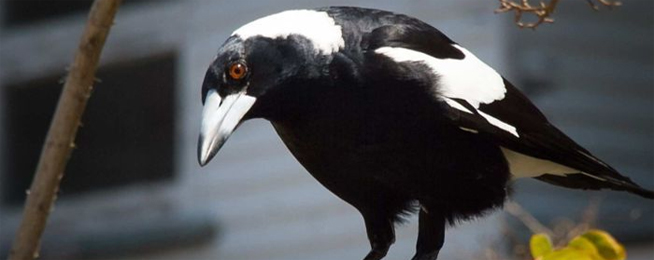Melbourne’s Magpie population is out in force this year causing unprecedented numbers of eye injuries to unsuspecting victims.
Dr Carmel Crock from the Victorian Eye and Ear Hospital emergency department has told ABC radio that they have experienced record numbers of bird-related eye wounds.
“Normally we might see one or two cases a month, but in July we saw 14, in August there were 12, and in the last week we saw five in one day,” said Dr Crock.
“The Department of Environment, Land, Water and Planning say the best thing to do is move quickly, but don’t run,” she added.
Magpies have long been a nemesis for cyclists. Solutions range from ice-cream containers, to cable ties, to googly eyes, with varying levels of success.
But this year it seems that they are particularly nasty.
“It does seem that they are targeting the head and eyes,” explained Dr Crock.
“if you see one coming at you, put your hands up.”
For those with an avian aversion, an alternate route can be planned by consulting Wildlife Victoria’s map of swooping birds.
But Dr. Crock had some of the hotspots on hand.
“We’ve had a lot of cases from Lonsdale Street – there seems to be a particularly angry bird around there,” she said.
“Also (be careful on) Punt Road, Lygon Street and Heffernan Lane in the CBD.”
What can you do to avoid the swooping season unscathed?
As expected, much of the advice is varied and contradictory — speed up, slow down, travel in groups, go solo, get off your bike and walk, don’t get off your bike.
The best tactic it seems is ‘know your enemy’.
Magpies are smart, extremely territorial and will swoop riders from up to 100m away from their nest. Almost all attacks are made by male birds that see people who ride or walk as a threat to their young.
This means that they swoop anywhere and everywhere – in urban and rural areas, in parks and gardens, along bike paths and in schools.
While the wacky ideas may work for some, our advice to avoid a beak in the head (or eye) is to show these birds and our wildlife the respect they deserve.
Know the swooping areas, give these birds space and take a detour where you can—at least until they get their young out of the nest.


